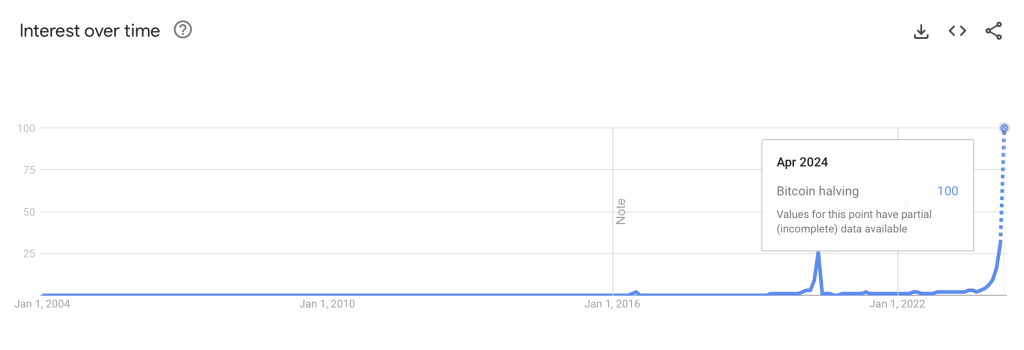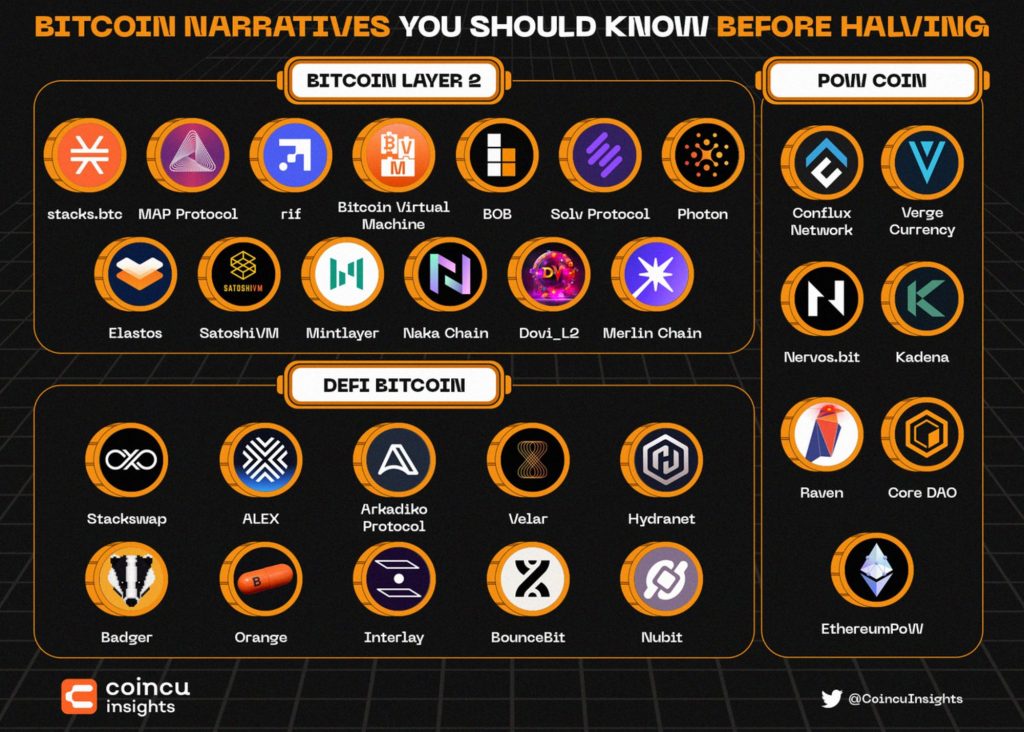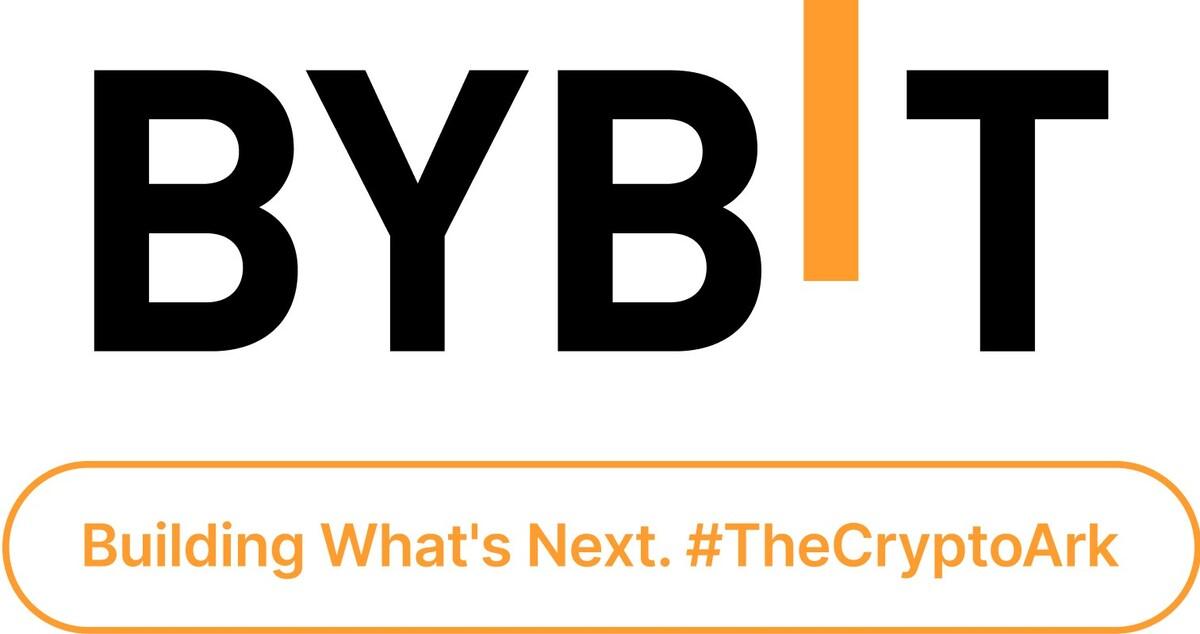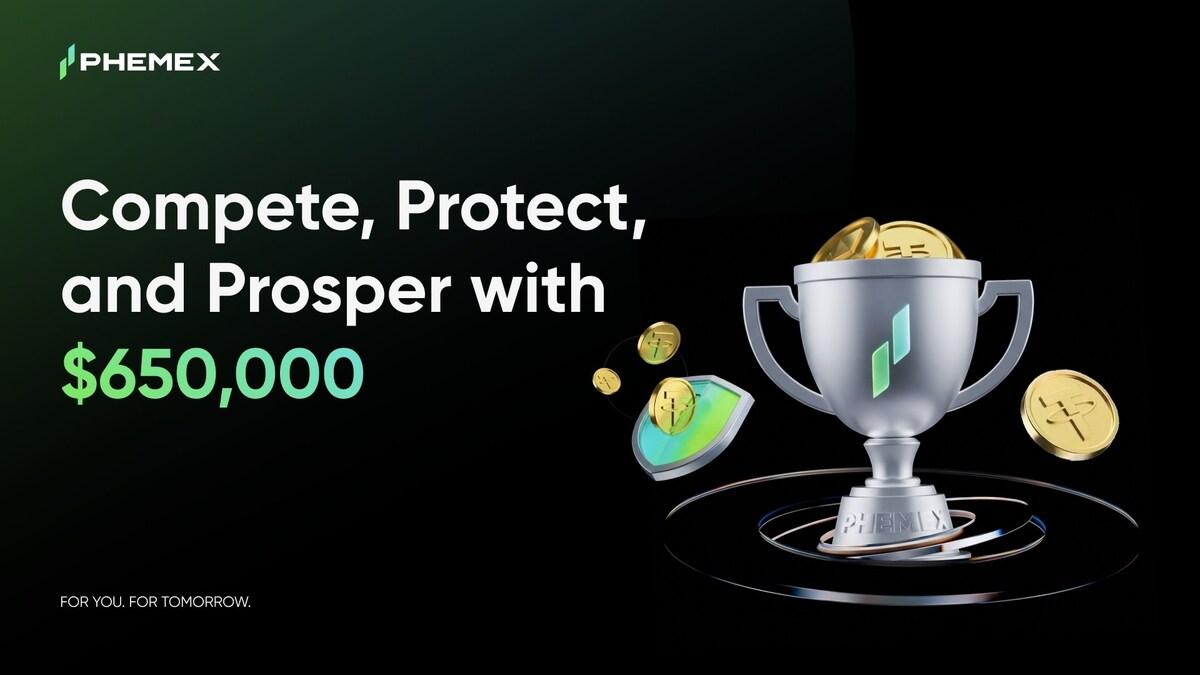Explore the process of Bitcoin halving, its impact on value, and the rise of Layer 2 projects and DeFi initiatives leveraging Bitcoin’s secure ecosystem.
This article provides a thorough overview of Bitcoin’s complexities. It covers the Bitcoin halving, an important event that happens every four years and affects the speed at which new Bitcoins enter circulation.
The information below examines the significance of Bitcoin halving, how it influences the cryptocurrency’s value, and its role in the larger crypto ecosystem.
It also discusses various Bitcoin Layer 2 projects and DeFi initiatives that use Bitcoin’s security and decentralization to develop innovative applications and services.
What is Bitcoin Halving?
The Bitcoin halving is an event that happens approximately every four years, during which the reward for mining new Bitcoins is cut in half. Such reduction directly affects the rate at which new Bitcoins are introduced into circulation.
The halving event is part of the Bitcoin protocol, originally designed by the creator of Bitcoin, Satoshi Nakamoto, to control the total supply of Bitcoin and increase its scarcity.
It began with 50 Bitcoins every 10 minutes, but as of 2020, the reward was reduced to 6.25 Bitcoins, and it’s expected to decrease to around 3.125 by April 2024. The process will continue until all 21 million Bitcoins have been mined, which is projected to occur around the year 2140.
Why is the Bitcoin halving important?
The halving process encourages miners to improve energy efficiency and amplify hash power, contributing to the sustainability and longevity of the Bitcoin ecosystem.
The halving also gradually increases Bitcoin’s scarcity by deliberately reducing the issuance of new coins, creating a sense of digital rarity.
Moreover, the anticipation building up to a Bitcoin halving often ignites dialogues and educational efforts about the core principles of Bitcoin, blockchain technology, and cryptocurrency economics, fostering increased community engagement.
Interest in “Bitcoin Halving” Reaches Record High Despite Recent Price Fluctuations

Searches for “Bitcoin halving” have reached a record high according to Google Trends data, surpassing the previous high from May 2020. Interest has grown since 2024. Despite a recent stall in Bitcoin’s rally, with a drop from $70,000 to $63,000 this week, interest in Bitcoin halving remains strong.
How does halving impact Bitcoin’s price?
The history of Bitcoin’s halving events has demonstrated significant impacts on the cryptocurrency’s price.
Halving Cycle ROI

- The first halving in 2012 saw Bitcoin’s price rise dramatically, with an average return on investment (ROI) of 7,415,870% achieved 85 days post-halving.
- The second halving in 2016 followed a similar pattern, although it took longer – 229 days – for the all-time high (ATH) to be broken. However, the average ROI was still substantial at 465,268%.
- The 2020 halving was the third in Bitcoin’s history, and it took 219 days for the ATH to be broken with an ROI of 123,580%.
Post-halving, Bitcoin’s price continued to perform bullishly for a full year, rising by more than 559% from around $8,700 in 2020 to $56,000 in 2021.
Notably, these halving events have often been followed by bull runs, this is not definitive proof of a causal relationship.
The theory is that reduced supply (due to halving) and steady demand lead to price increases. Yet, the exact impact of halving on Bitcoin’s price remains uncertain and subject to various market forces.
Bitcoin Narratives You Should Know Before Halving
In this section, we explore key narratives and developments in the Bitcoin ecosystem that are essential to understand in the lead-up to a Bitcoin halving.
These include advancements in Layer 2 technologies, innovative platforms and protocols, and the impact of these narratives on the future of Bitcoin and its integration with the broader digital economy.

Bitcoin Layer 2
Stacks
STX Stacks is a versatile, open-source Bitcoin Layer 2 platform that facilitates the creation of decentralized applications (Dapps) and smart contracts. Its unique feature is the ability it offers for smart contracts and decentralized applications to utilize Bitcoin as a secure foundational layer.
Moreover, Stacks employs an innovative consensus mechanism known as Proof of Transfer (PoX). This mechanism assists in transitioning Bitcoin into a Layer 1 blockchain, enabling any Dapp or smart contract to be developed on top of it.
Stacks also introduces a new programming language referred to as Clarity. This language enables developers to construct logic that can interact with both Stacks and Bitcoin, thereby broadening the possibilities for DeFi, NFT, SocialFi, and blockchain games.
BVM Network – BVM
Bitcoin Virtual Machine (BVM) is a comprehensive blockchain solution that enables the development of Layer 2 blockchain systems on the Bitcoin network. It functions as a user-friendly framework for anyone interested in constructing rollup protocols on Bitcoin.
Additionally, BVM provides a service platform for developers, facilitating the customization and deployment of their unique Layer 2 solutions on Bitcoin.
At present, BVM hosts five projects, each with a specific focus area:
- Bitcoin Arcade in the GameFi sector
- Naka in DeFi
- Alpha in SocialFi
- Eternal AI in AI
- Modular in Education
BVM offers a selection of modules – data availability, execution, rollup, bridges, payments, and decentralized applications (dapps) – that simplify the transition of Solidity smart contracts and applications from Ethereum to Bitcoin.
Rif Technology – RIF
RIF, standing for Rootstock Infrastructure Framework, was established to provide fintech innovators with the necessary tools and resources to develop wholly decentralized products, fostering a more equitable and free financial system.
As the most established and extensive Bitcoin L2, RIF is a service layer that operates on the Rootstock blockchain, offering accessible, decentralized tools and technologies.
RIF effectively bridges the divide between intricate blockchain technology and a fluid user experience, providing the necessary infrastructure and resources to overcome significant user accessibility challenges in the creation of innovative DeFi products.
ElastosInfo – ELA
Elastos is a platform for decentralized applications (dApps) that operate on a peer-to-peer network without centralized control.
Elastos’ main goal is to create an internet network that allows users to directly access content such as articles, films, and games without relying on other multimedia players or intermediary platforms.
Elastos aims to build a new generation internet network, using blockchain technology to empower users and create value by providing identities for digital content, clearly defining who owns them.
MapProtocol – MAP
MAP Protocol is a peer-to-peer omnichain infrastructure for Bitcoin layer 2, built on light clients and ZK technology, focused on cross-chain interaction. The project provides an omnichain smart contract development platform for dApps and interoperability for the Bitcoin ecosystem.
In May 2023, with the proposal and explosion of BRC-20, an alternative token standard trial for Bitcoin, users began paying more attention to the future of the Bitcoin ecosystem’s interoperability.
MAP Protocol makes navigating Web3 intuitive. In the protocol, users only need to know that they have full ownership of their various assets. When they transfer assets from one blockchain to another, it is entirely peer-to-peer, and no third party can intervene.
According to statistics, more than 150 Smart Contracts and nearly 5 million transactions with an asset volume of about 350 million USD have been deployed on the MAP Protocol.
SatoshiVM – SAVM
SatoshiVM (Satoshi Virtual Machine) is a Layer 2 (L2) extension solution on Bitcoin compatible with the EVM (Ethereum Virtual Machine), utilizing Zk Rollup technology to address scalability and transaction speed issues, thus enabling fast transactions at low cost.
Compared to Ethereum, Bitcoin Layer 2 solutions have developed relatively strongly, with over 25 projects launched in 2023.
Among them, SatoshiVM stands out due to its compatibility with the EVM, allowing developers to easily deploy dApps, thereby initiating a series of DeFi activities directly on the Bitcoin network.
However, SatoshiVM is still a relatively new project and has not received positive support from the community, especially after the controversial event between the project’s advisor and the Ape Terminal fundraising platform caused a significant drop in the value of SAVM (the project’s utility token).
Mintlayer – MINT
Mintlayer is a long-term, safe solution designed to scale and enhance the future of decentralized finance. Conceptually, Mintlayer can be seen as Bitcoin’s Layer 2, but it is not connected to Bitcoin.
Mintlayer constructs its blockchain network based on the Proof of Stake mechanism and uses Bitcoin’s hashing function as a parameter to randomly select Validators. This consensus structure is known as Dynamic Slot Allotments (DSA).
Naka chain – NAKA
Naka Chain is a Bitcoin layer 2 blockchain developed on BVM, designed for DeFi applications on Bitcoin, and uses $BTC as the transaction fee. Naka Chain offers a range of Bitcoin DeFi products to jumpstart the network:
- Swap: Asset exchange transactions.
- Futures: Future contract transactions.
- Staking: Transactions for depositing assets to earn interest.
- Launchpad: A platform to help startups raise capital.
In addition, Naka Chain will launch APIs, SDKs, and development tools for developers to build more Bitcoin DeFi products, such as lending, Bitcoin-based stablecoin, margin trading, and order book transactions.
Dovi – DOVI
Dovi is a Layer 2 protocol of Bitcoin, developed to optimize features, performance, and scalability of the Bitcoin network by integrating advanced technologies.
The uniqueness of this project is that it not only retains the core advantages such as decentralization and security of Bitcoin but also integrates other advanced blockchain technologies.
Dovi provides the ability to support fast transactions at a low cost, addressing the inherent limitations of the Bitcoin network in processing a large volume of transactions.
Merlin Layer2
Merlin Chain is a Bitcoin Layer 2 blockchain that uses the ZK-Rollups model, a decentralized oracle network, and a fraud-proof security solution.
In addition to supporting the development of other assets, protocols, and products on Bitcoin Layer 1 through its Layer 2, Merlin Chain also aims to “Make Bitcoin Fun Again”.
Specifically, Merlin Chain will be compatible with applications such as iZUMi Finance, Meson, Polyhedra Network, Bitmap Game, Bitmap War, and native BRC-420 DeFi applications like Mineral.
Furthermore, Merlin Chain is a subsidiary of Bitmap Tech, a leading OG group with a total market cap exceeding 500 million USD. Bitmap Tech’s BRC-420 “Blue Box” collection has become one of the trendiest assets on Ordinals.
Solv Protocol
Solv Protocol is a native yield platform powered by a decentralized asset management infrastructure. It’s dedicated to tokenizing and aggregating high-quality yields from across the industry.
It serves as a unified liquidity gateway, aimed at reducing barriers and costs for users seeking access to high-quality investment opportunities.
Solv is backed by Binance Labs, NOMURA Group, Mirana, Blockchain Capital, and more. Solv has achieved a TVL of more than $122 million, providing high-quality yields to more than 35,000 users.
BOB
BOB is a Bitcoin Layer 2 project that is compatible with the EVM. BOB combines the security of the Bitcoin network with scalability, as well as the integration of Smart Contracts from Ethereum.
BOB is designed to act as a common processing unit within the advanced Bitcoin network, enhancing Bitcoin functions and using the Bitcoin network for storage and consensus.
Photon
Photon, by SatoshiSync, aims to advance Bitcoin’s ecosystem with a Layer 2 solution. The platform is designed to scale Bitcoin’s functionalities and foster a rich landscape of integrated decentralized applications (dApps).
Photon sees Layer 2 solutions as gateways to an expansive dApp ecosystem, reinforcing Bitcoin’s dominance in the crypto economy.
DeFi Bitcoin
ALEX
ALEX, also known as Automated Liquidity Exchange, is a project that builds DeFi products specifically for the Bitcoin ecosystem. The platform provides most of the necessary DeFi products for users such as Launchpad, AMM, BRC-20 Orderbook, Stake, etc.
They completed a strategic fundraising round, raising 10 million USD from numerous interested investment funds. The list of funds that participated in ALEX’s fundraising round includes Spartan Group, CMS Holdings, DACM, DWF Labs, Foresight Ventures, G-20 Group, Ouroboros Capital, Summer Capital, Cultur3 Capital, and EVG.
Currently, ALEX is recording a total value locked (TVL) of 200 million USD, with a total trading volume of 1.3 billion USD from nearly 53,000 cryptocurrency wallets.
Badger DAO
Badger DAO (Badger) is a community-managed DeFi protocol project, focusing on building the necessary products and infrastructure to accelerate the development of Bitcoin in decentralized finance (DeFi) across multiple blockchains.
Specifically, it is an ecosystem where projects and individuals from all over DeFi can connect to collaborate and build different products. Joint ownership in the DAO encourages builders with aligned goals. The concept is to bring builders together by encouraging collaboration over competition.
Stackswap
Stackswap is a decentralized crypto-based exchange and marketplace for crypto investors (all skill levels), following the ideals of crypto and offering financial investment products for the DeFi (decentralized finance) space.
They issue and exchange tokens on the Bitcoin Network through the Stacks blockchain. They aim to create a next-generation DEX to support the future growth of DeFi projects in Bitcoin.
Stackswap was created for any user seeking an ecosystem to meet entrepreneurs with interesting ideas. Entrepreneurs can also come to Stackswap for a quick and code-free way to get their projects started while having access to potential investors already on Stackswap’s platform.
Orange
Orange offers financial products and services for managing Bitcoin and blockchain protocols. Orange Wallet, a browser extension, allows easy management of Bitcoin. Orange Swap, a decentralized exchange, enables asset exchange across Bitcoin protocols.
Orange Marketcap aggregates data on Bitcoin and other protocols. Orange Bridge facilitates interoperability across blockchain networks. Orange Assistant, an AI assistant, provides quick insights into the crypto industry. Orange Explorer allows exploration of all Bitcoin transactions.
Arkadiko
Arkadiko, a non-custodial decentralized liquidity protocol in the DeFi sector, is built on the Stacks blockchain. It focuses on liquidity and capital efficiency for assets. It offers the USDA stablecoin, minted from STX tokens.
Users can use STX as collateral to mint USDA, an over-collateralized stablecoin. This ensures enough collateral for minting, but reduces capital efficiency and may risk asset liquidation in a volatile market.
Velar
Vellar is a DeFi liquidity protocol built on Bitcoin via the smart contract layer Stacks. Vellar brings a range of DeFi features from PerpDEX, AMM to launchpad, helping BTC investors profit without requiring custody rights, allowing users to manage Bitcoin in a decentralized and safe manner.
Vellar leverages the basic security and finality of Bitcoin transactions, while using layer 2 solutions like Stacks for scalability and processing more transactions.
Vellar’s goal is to build a DeFi ecosystem with Bitcoin at the center, aiming to create a comprehensive, secure, and private financial system, empowering users to control their financial future.
The Hydranet
The Hydranet Decentralized Exchange (DEX) is a Layer 3 trading platform pioneered by Hydranet DAO. It combines Layer 2 off-chain solutions, such as the Lightning Network and the Connext Network, to enable cross-chain trading of fundamentally different cryptocurrencies.
Trades are executed quickly, inexpensively, and most importantly, without the need for trust, as all users always maintain control of their funds.
InterlayHQ
Interlay is a bridge module, enabling communication between Bitcoin and the multichain ecosystem, creating new applications for BTC. Interlay’s goal is to become a dedicated DeFi hub for Bitcoin, helping Bitcoin to integrate more into the DeFi world and offering users more options for using their BTC.
In the past, Interlay was a parachain built on Polkadot, which won the auction in February 2022. Interlay’s DeFi hub is a single center for all DeFi activities related to Bitcoin, including swapping, staking, and lending.
With the advantages of speed, low cost, and the ability to pay with any asset, as well as integration with stablecoins, Interlay’s DeFi hub offers a competitive experience even compared to centralized providers. Interlay’s BTC bridge serves as a safe means to integrate Bitcoin into the multichain ecosystem.
Through iBTC, an asset-backed 1:1 by BTC, users can use it as collateral, perform transactions, or participate in profit-making activities in the DeFi ecosystem on various blockchains.
BounceBit
BounceBit is an infrastructure project that offers products where users can restake various BTC assets. With BounceBit, BTC holders can earn parallel profits on-chain in DeFi and off-chain in CeFi.
BounceBit is built to provide a comprehensive infrastructure layer, including sidechain, oracle, bridge, VM (Virtual Machine), DA (Data Availability), etc., for users to profit from BTC restaking activities.
Its main product is BounceBit Chain – a Layer 1 blockchain with a highly compatible Proof of Stake (PoS) mechanism that supports BTC holders to earn profits on multiple networks.
Nubit
Nubit was built to function as a Data Availability layer for other blockchains based on Bitcoin. This combination brings speed and cost efficiency while still leveraging a degree of security from the Bitcoin network.
Since the inception of the Ordinals protocol, the number of Inscriptions on the Bitcoin network has increased rapidly. Over 50 million Inscriptions were engraved after a year of launch and continue to grow, indirectly causing a burden on the Bitcoin network.
Such growth comes from users wanting their data to be secure and immutable on the blockchain. Nubit recognized this gap and is on a journey to create a solution to alleviate the Bitcoin network while still ensuring user data security.
PoW Coin
Conflux (CFX)
Conflux (CFX) is a decentralized hybrid blockchain that combines both Proof of Work (PoW) and Proof of Stake (PoS) to form a Hybrid Proof of Stake model.
Initially, it operated based on the PoW mechanism, but it recently completed an upgrade adding a PoS component. Another improvement is eSpace, a software fully compatible with the Ethereum Virtual Machine (EVM). It was introduced simultaneously with the PoS chain in the Hydra upgrade.
Although transactions from fiat to crypto and initial coin offerings (ICOs) are banned in China, crypto-to-crypto transactions are still allowed. Therefore, Conflux can comply with China’s regulations, allowing new crypto projects to enter the local market.
Nervos Network (CKB)
Nervos Network is an open-source project, encompassing a suite of public blockchain protocols and ecosystems. The Nervos Network addresses the major challenges currently faced by platforms like Ethereum and Bitcoin.
The core design principle of Nervos is that layer 2 will run diverse solutions, including the Nervos App Chain, focusing on scalability and user dApps.
The Nervos Network uses layer 2 with near-unlimited transaction capabilities and minimal transaction costs for a secure, decentralized layer 1 blockchain.
EthereumPoW (ETHW)
EthereumPoW (also known as Ethereum PoW Fork) is a hard fork chain of Ethereum, created in the aftermath of The Merge. It can be understood as the chain that retains the previous characteristics of Ethereum.
EthereumPoW was born from the miners’ opposition to Ethereum’s new mechanism. They argue that abandoning Proof of Work is abandoning the mechanism that forms the brand of classic crypto assets, including Bitcoin.
However, EthereumPoW did not receive the support of Vitalik (the founder of Ethereum) or the Ethereum Foundation. Therefore, the Ethereum community is generally divided into three groups:
- Those who support EthereumPoW: Miners, Justin Sun, Poloniex…
- Those who support EthereumPoS: Ethereum Foundation, Vitalik Buterin, Chainlink, Aave, Circle, Tether, Argent…
- Neutral parties: Major exchanges such as Binance, FTX, Coinbase…
Ravencoin (RVN)
Ravencoin is a peer-to-peer blockchain, effectively managing the creation and transfer of assets from one party to another. The project launched on 01/03/2018, coinciding with the 9th anniversary of Bitcoin’s operation.
The reason Ravencoin launched after 9 years of Bitcoin’s operation is unique because the project is a fork from Bitcoin’s code. Ravencoin is the product of over 430 Bitcoin developers, along with over 14,000 commitments on the project’s launch day.
Ravencoin prioritizes security, privacy, and censorship resistance. The project is open for use and development in any area, while also allowing for simple additional features for users based on their needs.
Kadena (KDA)
Kadena is a Proof of Work blockchain that includes both public and private blockchains, forming a hybrid blockchain. Kadena uses a smart contract language called Pact, a secure language with built-in automatic verification features.
The Kadena project was established with the aim of revolutionizing the way the world interacts and transacts. However, for mass application, both the chain technology and the ecosystem connecting with the business world need to be reimagined from scratch.
The Kadena project has built a proprietary chain architecture and created tools to make blockchain work for businesses, achieving speed, scale, and energy efficiency previously thought impossible.
Core DAO (CORE)
Core DAO is a Layer 1 project capable of interacting with the EVM. The Core development team has combined the Proof-of-Work and Delegated Proof-of-Stake consensus mechanisms to create a blockchain network with security, scalability, and decentralization features.
Similar to other Layer 1 solutions, Core DAO was developed to solve three major problems in the blockchain field: scalability, security, and decentralization. The solution employed by Core DAO is the Satoshi Plus consensus mechanism.
The Core blockchain is currently managed by the core team through DAO. In the future, the governance process is expected to be decentralized, and the project management responsibilities will be given to those holding CORE tokens.
Verge (XVG)
Verge (XVG) is a cryptocurrency focused on privacy and anonymity for users. Verge integrates blockchain technology with services like I2P and Tor to hide all user personal information, such as IP and location.
Therefore, transactions conducted on the Verge platform are untraceable, and transactions are also processed at a much higher speed than other cryptocurrencies. Verge was initially created as DogeCoinDark in 2014 and was later renamed to Verge (XVG) in 2016.
Conclusion – Bitcoin Narratives You Should Know Before Halving
In conclusion, understanding Bitcoin narratives, particularly those related to Layer 2 solutions and DeFi initiatives, is crucial before the Bitcoin halving event.
These narratives highlight the ongoing evolution of the Bitcoin ecosystem, showcasing developments in areas such as smart contracts, decentralized applications, and blockchain gaming.
As we approach the next halving, it’s essential to stay informed about these projects and the potential they hold for enhancing the functionality and value of Bitcoin.
The halving event not only affects Bitcoin’s supply but also sparks discussions about the future of Bitcoin, its underlying technology, and its role in the broader cryptocurrency economy.
DISCLAIMER: The information on this website is provided as general market commentary and does not constitute investment advice. We encourage you to do your own research before investing.















